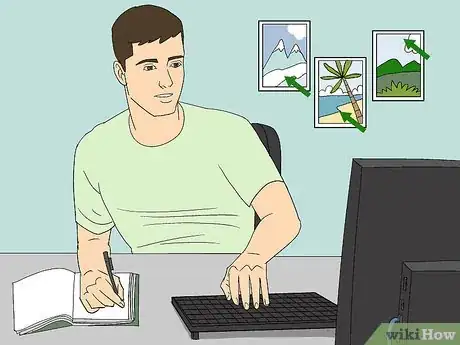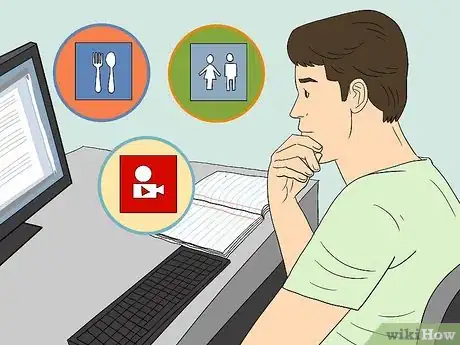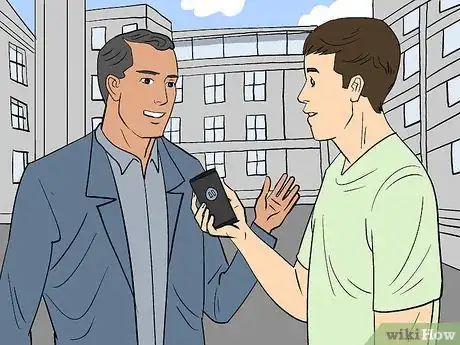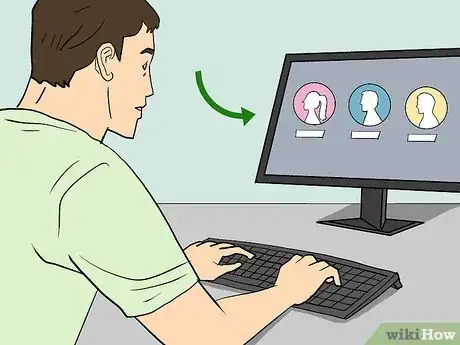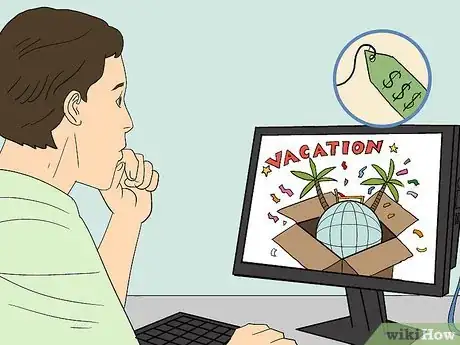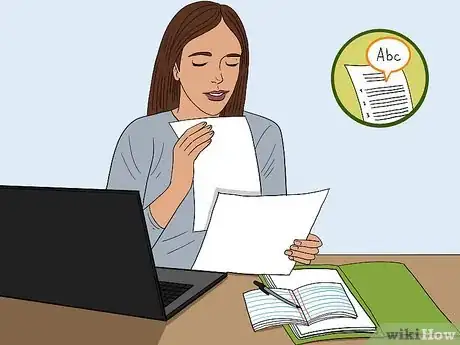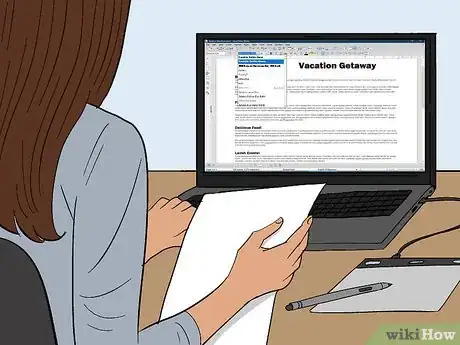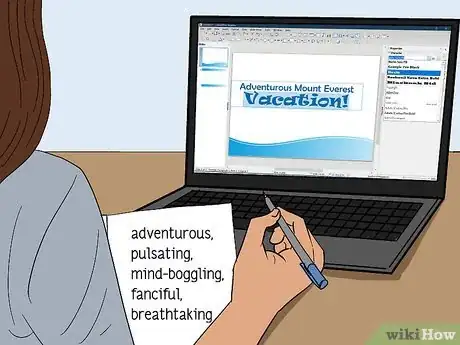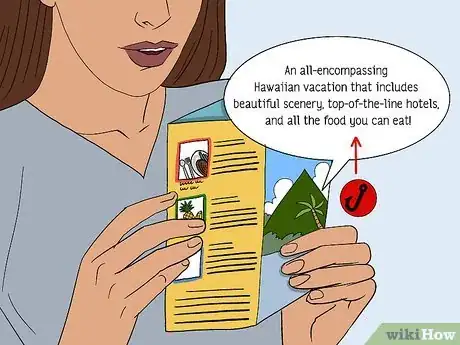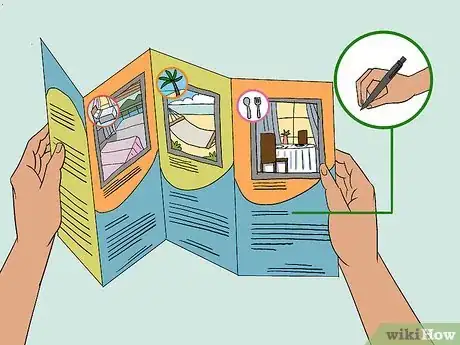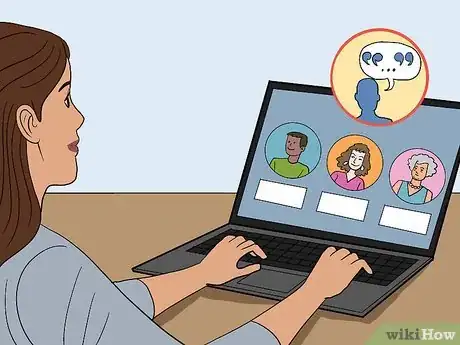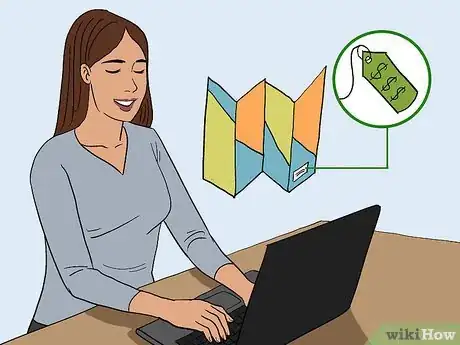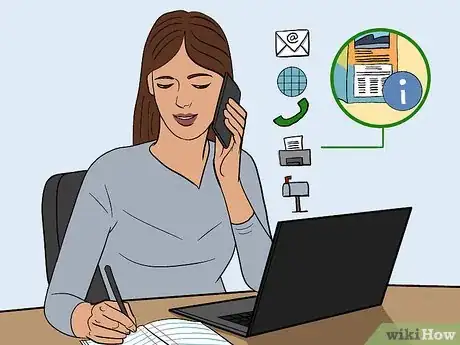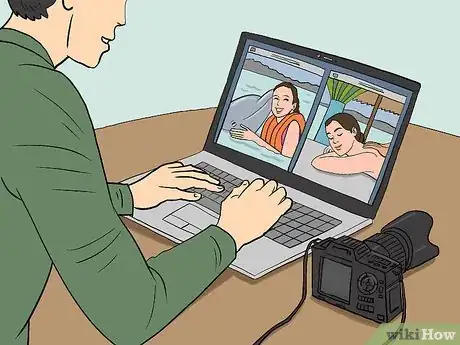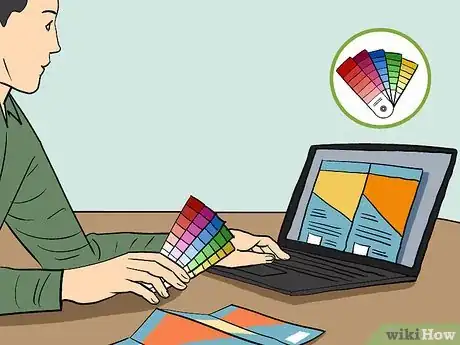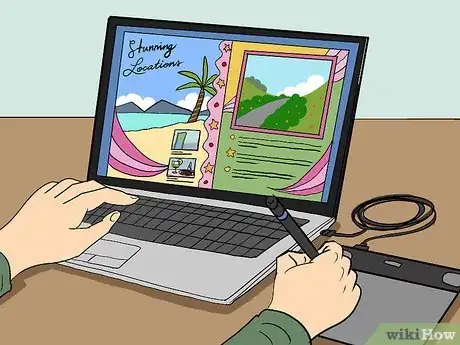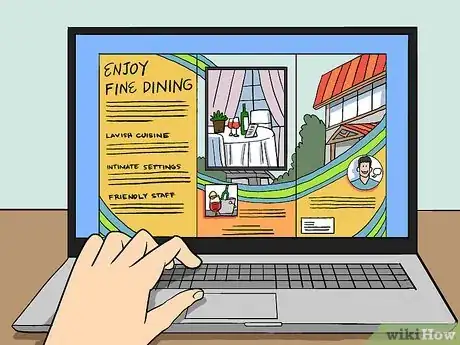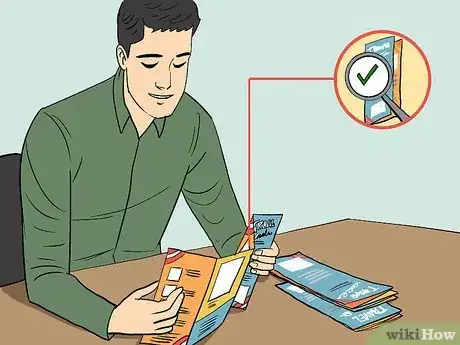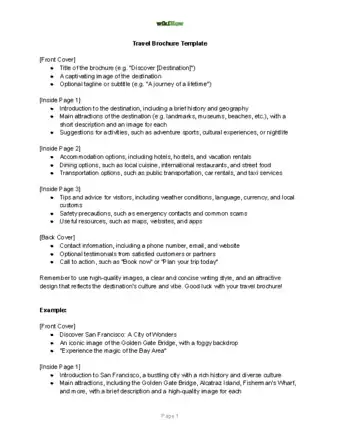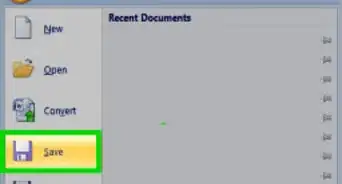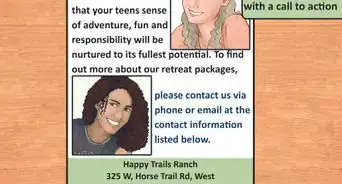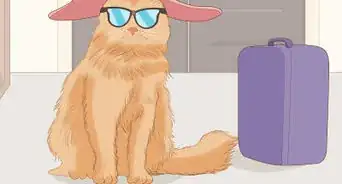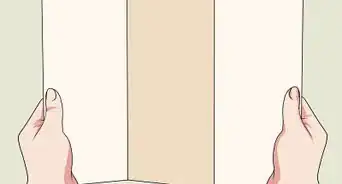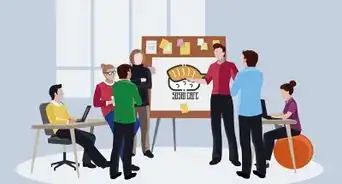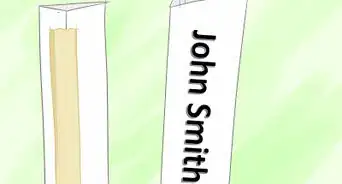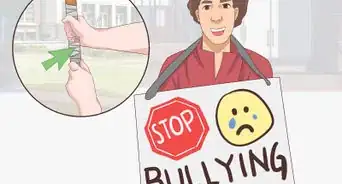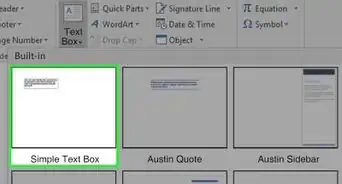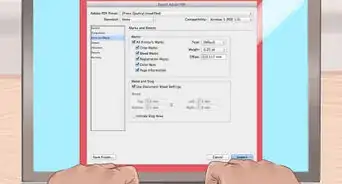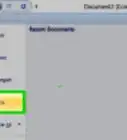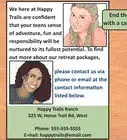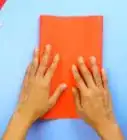wikiHow is a “wiki,” similar to Wikipedia, which means that many of our articles are co-written by multiple authors. To create this article, 53 people, some anonymous, worked to edit and improve it over time.
There are 8 references cited in this article, which can be found at the bottom of the page.
This article has been viewed 567,414 times.
Learn more...
A creative, expertly written and well-designed travel brochure invites readers to cast themselves into a story that takes place in an exotic locale. In this article, learn how to make an enticing travel brochure that will have your audience fantasizing about-and booking-your travel packages.
Steps
Determining the Details of Your Travel Brochure
-
1Choose the destination of your potential clients. If you are a professional working for a travel company, your destination of choice will be the one you work for. If you are a student, and are creating a pretend travel brochure, you will want to pick out a desirable, exotic, and interesting location.
- A professional should already know what destination they are representing, or attempting to advertise for. Use this step to get to know the key features of your location: mountains, lakes, cabins, museums, parks, etc. Write each of these key features down on a piece of paper for use later on.
- If you are a student, find an exciting place to advertise for. Some great examples are Mexico, Hawaii, Myrtle Beach South Carolina, the beaches of Florida, or Australia, to name just a few. Research the location you choose (using reputable sources such as online search engines, encyclopedias, library books, etc.) and find out key features about the location. Write each of these down on a piece of paper for use later on.
- The lists for both students and professionals should be extra long at the beginning. It is better to create a long list to start, and then cross off items later on.
-
2Explore and locate the amenities of the location. These include, but are not limited to, restaurants, shops, bathrooms, movie theaters, etc. It is important that your potential client knows what amenities are available to them at your destination, and where they are located.
- Travel around the website by yourself and write down what and where the particular amenity is.
- If you are far away from where you are advertising for, look for maps online that might help you locate particular amenities. Sites like Google Maps often point out exactly what and where each of these is.
- After you have created a detailed list of the amenities, put a star next to the items you think are most important (bathrooms generally are a top priority). Make sure to note whether these amenities provide additional accommodations, such as being handicap accessible.[1]
Advertisement -
3Find out what the residents are saying, if your destination has residential accommodations. If you live with, or near, persons whom live there, talk to them. Get their opinions/first hand accounts of what the destination is like.
- Visit peoples' homes and ask them politely to give their opinion. Remember to bring a pencil and paper to write down exactly what they say. You can also bring a voice recorder if you do not write very fast.
- If the destination is strictly for vacation (non-residential) try calling people whom have vacationed there in the past. As with the previous step, write down exactly what they have to say about their experience.
- Students who do not have direct contact with persons whom live, or have vacationed there, should look online. Find internet sites that link you with local hotels, restaurants, etc. in the area of your destination. Look for reviews that have to do with the destination (Mexico, Hawaii, etc.) rather than a particular place of accommodation. Write down what they have to say.[2]
-
4Pick your target audience. For every destination, you will need to figure out what demographic group will be most interested. This will not only help you highlight particular accommodations, but also create a brochure that is visually stimulating to your targeted demographic group.
- Use your list of key features and amenities to pick a target audience. Here are some key examples which will help:
- Vacation spots with lots of bathrooms, and restaurants available are great for an older demographic audience.
- Destinations which are primarily vacation spots (non-residential) usually target a younger audience, or newlywed couples going on their honeymoon.
- Vacation spots which have hotels furnished with WiFi and cable TV are great destinations for families.
- Destinations which have large rooms are great for business workers, who are looking to conduct work from far away.
- This is not an all encompassing list, but it will give you an idea about what to look for, and how to pick the right demographic audience. Something you might think is minor (a boardwalk for example) might make all the difference in the world for a particular clientele.
- Use your list of key features and amenities to pick a target audience. Here are some key examples which will help:
-
5Determine the price of your travel package. This is the most important step of all. You need to make a reasonable profit, but you also do not want to scare away potential visitors. If you are a professional, the price of the trip will probably already be determined.
- Take into account the previous four steps, and in particular the target demographic group. Set a standard price to each of the amenities, and add them all up. Set a standard price for all of the key features of the destination and add them all up. Finally, add the price of the amenities and destination hot-spots together.
- Adjust the vacation cost according to who the audience is. Younger clientele and families will most likely be looking for a cheaper vacation. Older clientele and business types will have more money to spend. Generally speaking, vacations for a family of four should run between $1000 and $2000. Go higher or lower as you see fit. How to Calculate Cost of Travel
Writing the Text of Your Travel Brochure
-
1Create a preliminary outline. Before you begin to publish a final copy, you will want to practice writing exactly what you want to say in the brochure. This is a great time to check spelling, grammar, and punctuation.
- First, you’ll want to create a story. Just like a good novel pulls in a reader, the client wants to feel as if they are going on an adventure. In paragraph form (full sentences), write a convincing argument for why your vacation spot is the best place to visit.
- After you have written down your argument, go back and proofread. More importantly, cross out extraneous information, keep what is critical, and add in to places that need a more exciting, or convincing argument.
- This argument can then be split apart into different sections of your brochure. You might have to tailor the sentences to exist as a stand-alone argument in the different sections, but this will give you a good head start. It is important that the writer knows exactly why each of the individual pieces are critical, and how they come together to convince the clientele.
-
2Use specialized fonts and lettering. The brochure should be legible, and easy to follow. There should be an overall flow to the brochure, and it should not feel discombobulated.[3]
- Your heading/title should appear in bold lettering, underlined, and be large enough to read from far away. If someone is sitting in a doctors office, or at a coffee shop, they should be able to see the title clearly, at the top of the brochure.
- Each of the subheadings/section headings should also be in bold, and underlined. They should be a slightly smaller font size than the title. They should all also all be the same font. If one subtitle is in Times New Roman, keep them all Times New Roman. This creates a nice flow to your brochure, and does not bog down the viewer in trying to comprehend the brochure.
-
3Write a captivating title. Simple tag lines like "Mexican Vacation" or "Hawaiian Vacation" are going to bore the potential vacationers and not draw them in to read the rest of the brochure. You need to use descriptive adjectives, possibly even verbs, to entice the viewer.[4]
- Write down some adjectives you know that are not typically used, such as adventurous, pulsating, mind-boggling, fanciful, breathtaking, etc. Put these words first in your title, so that the readers eyes, reading left to right, will catch that key word.
- Then, make sure to include the location in the title. If you advertising for a Hawaiian vacation, do not leave out the word Hawaii. Put the location right after the adjective.
- Following the name of the place, you can finish the title with simply "vacation" or a synonym. End the title in an exclamation point, so that it appears that the person selling the vacation is just as excited as the potential clientele.
- Bold the lettering, and underline the title. A good example is: Adventurous Mount Everest Vacation!
-
4Hook your audience with the opening sentence. This sentence should appear on the first flap the reader opens up to. Think of this sentence as a thesis statement of a paper.
- You want to make the argument for this vacation clear right up front. The reader is not going to look around the rest of the brochure if they are not convinced at the very beginning.
- This would be a great time to simply list off a few of the accommodations/hot spots. For example: “An all-encompassing Hawaiian vacation that includes beautiful scenery, top-of-the-line hotels, and all the food you can eat!”.
-
5Write each of your sections. Your brochure is going to be about half visuals, and half written words. Therefore, for each section of the brochure, you will only use a few sentences (3-4) to explain each distinct aspect of the vacation.
- You will want to include, at the bare minimum, the following sections: restaurants, hotels, scenery(appearance of the vacation spot), and shops. These are four of the most basic things people need to know about before they go on the vacation. In total, you should have around six to eight sections.
- Make sure that what you are saying is necessary, succinct, and convincing. Consider what image you are using and make sure that the words match up. Feel free to highlight, italicize, or bold certain words or phrases.
- This would also be a great time to add in those accommodations, such as handicap accessible, free continental breakfast, bike/walking trails, etc.
-
6Copy and edit testimonials. Earlier, you gathered and wrote down the personal experiences of people whom have previously been on vacation there. This is a great time to not only include a summary of what they said, but include block quotes.
- To include block quotes in your brochure, start by indenting. Then add a quotation mark, and write in your quote. Finish by adding another quotation mark.
- You will want to include only the most sensitive, valuable information. Do not include bad experiences, as this might turn off the clientele.
- If you want to take out a sentence in the middle of a paragraph, simply highlight and delete. Then, in between the remaining sentences, add ... (three periods in a row). This will allow you to shorten the quote, keep what is necessary, and highlight what is most important.[5]
-
7Include a price section. This is not an all encompassing section. There is no need to create a chart, showing them all the options. However, you should give them a ballpark figure as to how much the vacation should cost.[6]
- Include some simple terms in your 3-4 sentence price section such as: “Prices as low as $1000 for a family of four!” or, “Prices start at $1500, and include great discounts if you purchase by phone!”
- Mention the different offers/deals vacationers can get through your particular company. Usually, there are family discounts, senior discounts, children discounts, etc.
- This section should appear on the inside of the pamphlet, to the far right (at the end). You do not want to start the brochure by introducing price, nor do you want to put the price on the back of the brochure, as the clientele will probably look there first and never look inside.
-
8Link the viewer to other sources. This step is critical, because the brochure will not be enough. After the price section, or on the back of the brochure, include a section that links email addresses, web page addresses, phone numbers, and a mailing address.
- This should be done as a series of bulleted points or dashes. Do not write this information in paragraph form, as it will all run together.
- Check a second and third time that the information is up to date and correct. Look at the bottom of webpages to see when the last time the page was updated. Call the numbers you are listing on the brochure and see who picks up the phone. The information you are presenting needs to be accurate.[7]
Creating the Visuals for Your Travel Brochure
-
1Choose eye-catching photos. These photos will help you tell the story you want to tell. The clientele should be excited and intrigued by what they see in the brochure.
- Some good examples include: A smiling visitor hugging a dolphin at a sea life attraction, or a woman relaxing with a massage in an open-air spa that overlooks the tropical sunset.
- Make sure the photos are in color, and have a high-quality resolution. Do not use stock photos which generally look fake, and off-putting. Use real life images, or photos you have taken yourself at the location.
- People enjoy seeing others having fun, so try to include photos of people enjoying themselves at your destination rather than showing an empty hotel room or deserted beach. This will invite readers to project themselves into the photo.[8]
-
2Consider the color scheme carefully. Each vacation will have a different feel/tone. You will want to convey whether your destination is relaxing, exciting, or somewhere in between.
- To convey a relaxed feeling appropriate for a spa, use muted pastel tones. Children's destinations are best marketed with bright, bold colors. Historical site brochures can be given an "antique" feeling with sepia and earth tones.
- For each panel of the brochure, use the same color. If there are different colors for each panel, it can become distracting and gaudy.
-
3Add in borders, asterisks, and designs. While you never want to distract the viewer too much, these three things can help in the aid of the story you are trying to tell.
- Use a thin border to contain each of the panels in your brochure. A thick border can become distracting. The border should be a color that is a slightly darker/lighter shade of the tone that you use for the rest of the brochure.
- If you want to highlight key points of your story, use bullet points or asterisks. Generally, 3-4 is the range you want to stay in. Try to highlight things that are not written about in the sentences.
- Designs can also help, such as stars, rainbows, arrows, etc. Add these where and when you see fit. Once more, do not overuse these, and bog down the viewer in the visuals. The clientele should want to read more, not necessarily look more.
-
4Organize the brochure so the copy and visuals work together. The 3-4 sentence sections should match what the visuals are saying. For example, if you are talking about restaurants in your section, use a picture of a restaurant.
-
5Invest in a professional printing company. If you are a student, a standard folded piece of paper will work just fine. However, professionals should look into printing brochures at facilities that specialize in printing.
- Tell the printing company that you want the brochures printed on high-quality paper. Cheap, flimsy paper can easily be torn, ripped, or water-damaged. Thick, coated paper provides resistance to accidents, and can be carried around mush easier.
- If you wind up needing to use your home or business printer, just make sure to use thick, heavy paper. The settings of your printer should be set to the highest pixel quality so that your pictures come out clean and crisp.
-
6Provide a final copy proof. Make sure the printing company has not dramatically changed/altered the layout or design of the brochure. For both professionals and students, this is a great time to go back and proofread one more time.
Travel Brochure Template
Community Q&A
-
QuestionWhat is a travel brochure used for?
 Community AnswerIt's a short summary of information to show potential travelers the highlights of the area - entertainment, restaurants, parks, historical areas, museums, etc. It's helpful because all of the info is in one place and travelers don't have to do their own research.
Community AnswerIt's a short summary of information to show potential travelers the highlights of the area - entertainment, restaurants, parks, historical areas, museums, etc. It's helpful because all of the info is in one place and travelers don't have to do their own research. -
QuestionWhat shape should the brochure be?
 Community AnswerBrochures are typically rectangular, so make a rectangular-shaped brochure.
Community AnswerBrochures are typically rectangular, so make a rectangular-shaped brochure. -
QuestionWhat type of paper should I use to make a brochure?
 Community AnswerThin glossy papers are suitable. If not available, a hard paper with a soft feel to it can also be used.
Community AnswerThin glossy papers are suitable. If not available, a hard paper with a soft feel to it can also be used.
Things You'll Need
- Heavy paper
- Printer (preferably large (business) rather than desktop)
- Ink
- Colored pencils, magic markers, rulers, ball point pens, etc. (for handmade brochures)
References
- ↑ https://www.biggerpockets.com/renewsblog/2014/10/06/6-amenities-to-ensure-repeat-business-in-your-vacation-rental/
- ↑ http://www.entrepreneur.com/article/83752
- ↑ http://www.huffingtonpost.com/2014/07/28/font-ranking_n_5625650.html
- ↑ http://papyrus.greenville.edu/2013/05/on-the-importance-of-a-good-title/
- ↑ http://www.englishdiscourse.org/block.quotes.htm
- ↑ https://www.ustravel.org/news/press-kit/travel-facts-and-statistics
- ↑ http://www.computerhope.com/tips/tip30.htm
- ↑ http://www.business2community.com/content-marketing/pictures-articles-attract-eye-balls-01109658
About This Article
To make a travel brochure, start by identifying the main attractions in the area you're advertising, such as restaurants or movie theaters. Next, decide who your target audience is by evaluating the attractions at the destination, like by aiming for a young demographic if it's a vacation spot. To start writing, choose a catchy title and engage your audience with the first sentence on the opening flap by mentioning the destination's key strong points, such as good accommodation. Then, make sure you have great visuals to break up the text, since pictures are key if you want to grab people's attention. For more tips on how to write your sections or how to choose good visuals, read on!
